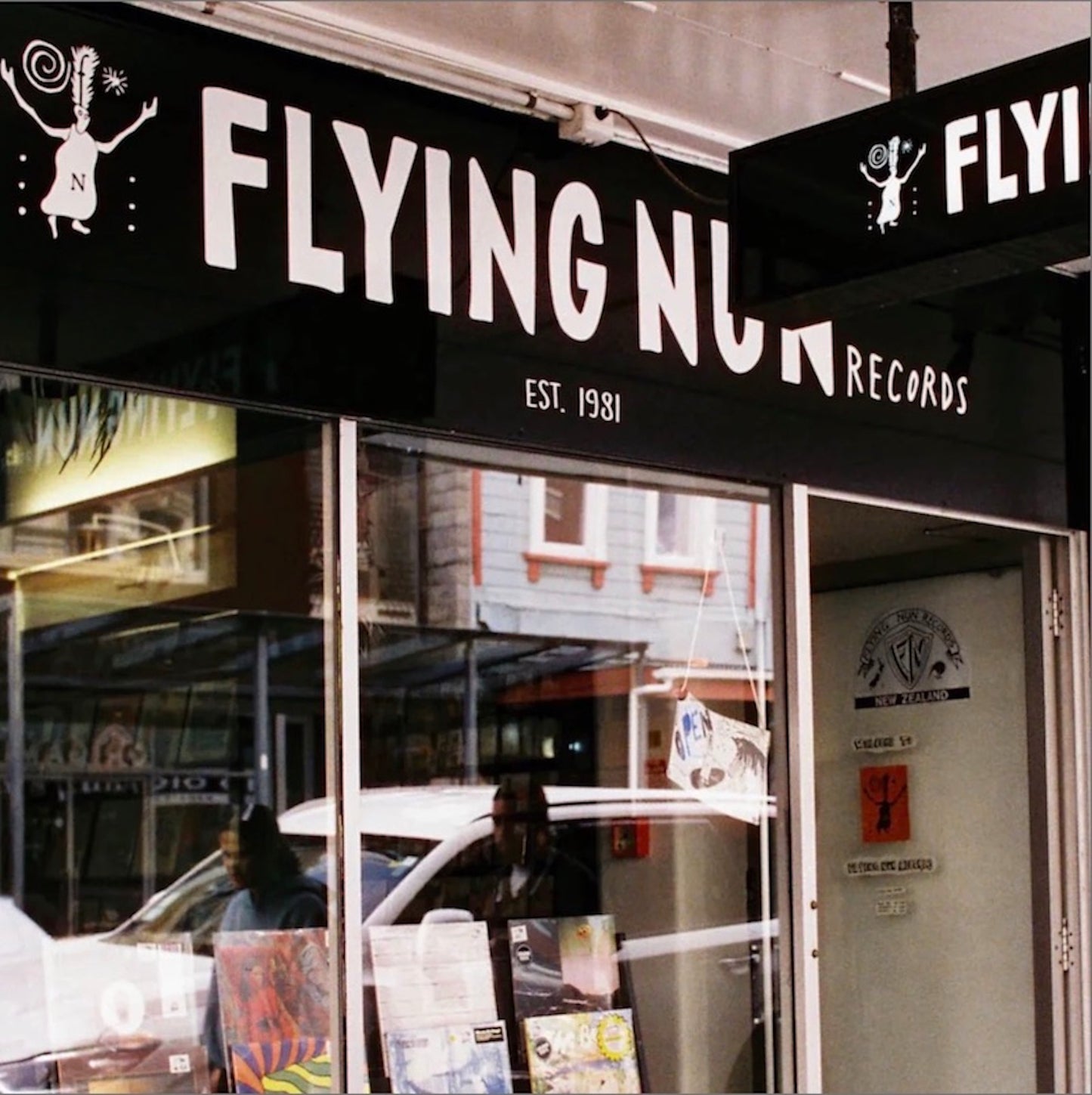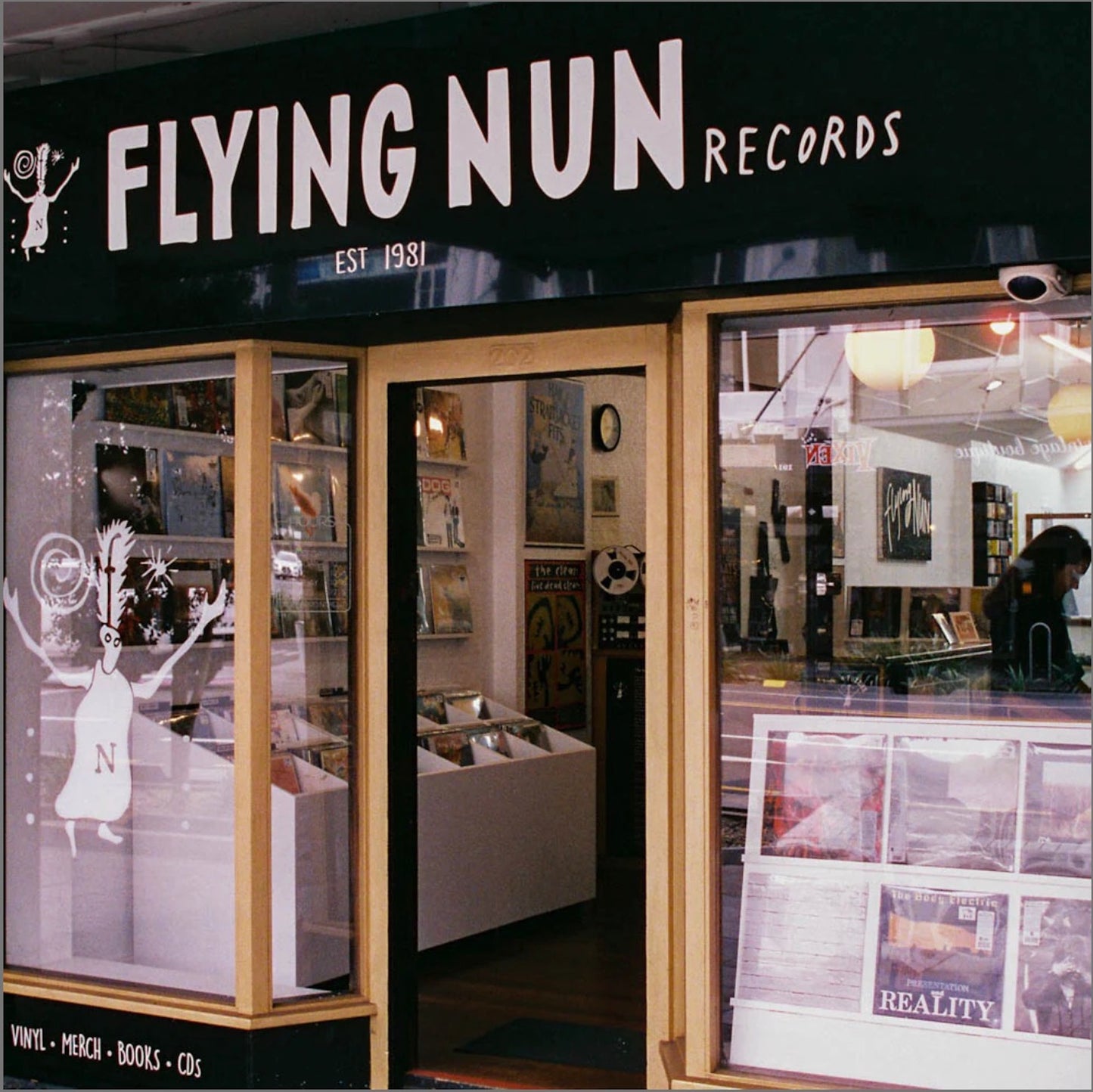
Growing up in small town Ngaruawahia in the 1980s, the radio was my closest ally. From about the age of five I would leave my little radio running all night, tuned low. I’m sure these subliminal frequencies have played a significant part in the way my ears are tuned and the kind of music I’m attracted to. I would always be in tune to any weird, atmospheric sounds embedded in a song. I loved pop groups like Orchestral Manoeuvres in the Dark, Human League, and Duran Duran - their self-titled album was the first record I ever owned; given to me by my Aunty Pamela. I left that record out in the sun so it warped, and to this day when I hear Planet Earth I still listen out for the bit where my record warped and stuck. Little did I know then, that those groups all had fairly experimental and sonically adventurous beginnings before their glossy pop confections. An obsessive researcher, I would find out absolutely everything I possibly could about any band I liked and their origins and processes. I also became interested in regional sounds and scenes - Sheffield, Liverpool, Edinburgh, Glasgow, Manchester, Cleveland, Dunedin, Christchurch. All of which seemed impossibly exotic to me in small town Waikato. OMD was like a mutated cross between Stockhusen and ABBA. Musique concrète masquerading as pop songs. Stanlow may be the only pop song written about an oil refinery from a UK top 10 album. My older sister’s Love will Tear Us Apart 12” made an impression too. The common thread was lonely Cold War synths, adventurous use of technology and I increasingly liked and became interested in strange sounds made on homemade, DIY gear.
The Hamilton Public Library was my ‘third place’ - the “social surroundings’ separate to home and high school. As a teenager, I spent a lot of time browsing their excellent CD collection. Often, it would just be a matter of being intrigued by a compelling, mysterious cover with no context. And this is how I found a couple of significant musical discoveries. One was Vortura by Bailter Space with its minimal, murky purplish cover that didn’t give much away. Why don’t people talk about that Bailter Space album much? It was the imposing and noisy I.C.Y that blew me away. The other definitive find was This Kind of Punishment’s In the Same Room/5 By Four which had a profound impact. For starters, their name sounded sort of pretentious and kind of brutal, which I liked. But I picked it up really just because I liked how the cover was stark and it looked like it was a degraded, dungy photo just taken from a telly still. It was of course, a still from Immigration Song and I thought the Jefferies brothers looked impossibly cool. The terrifying, air-clearing relentless clatter of North Head was like nothing I’d heard before.
And speaking of terrifying. I used to listen to the chilling and eerie The Ghost of Some Cold Street by Headless Chickens at night on my Walkman at full volume just to freak myself out.
When I was around 16, one of the only records I owned (it was all tapes, then) was the Future Shock EP by The Gordons which was given to me by my boyfriend’s friend who knew a lot about music and had a lot of records but seemed ambivalent towards most of them for some reason so was always giving his records, tapes and rock t-shirts away.
Another definitive moment was hearing The Puddle for the first time via a dub-of-a-dubbed cassette of Into the Moon. The tape didn’t have a track list or even say who the band was, so it was around eight years before I even knew that it was not only The Puddle, but by a New Zealand band. A bogan friend who had no idea what it was passed me the tape in biology class. We mostly listened to Slayer and Black Sabbath then. So comparatively, The Puddle was like music from another planet. Produced by Alastair Galbraith, it sounded like it had been recorded in the bottom of a tin can. Dusty and sprawling, there was still a heaviness about it that appealed. As did the thrillingly dangerous and volatile nature of George Henderson’s songs with their metallic-edged and drugged up, brokenarsed psychedelia.

The Making Losers Happy: Xpressway NZ Singles 1988-1991 was an important compilation that I had a dubbed copy of on tape. Compiling limited pressed Xpressway singles, it’s a gutsy and galvanising insight into the murkier, dronier and muckier side of New Zealand music. The Peter Jefferies and Robbie Muir B-Side Fate of the Human Carbine is an enduring beauty right from Jefferies' quiet "one, two, three, four" count-in at the beginning to the unexpected burst of guitar at the end. Spidery and spare guitar scrapings punctuated by stabs of piano, I always liked this song better than the A-Side Catapult and love the stark black and white image of Jefferies and Muir on the sleeve of the 7” single. I thought it looked cool how Muir is smiling, which you didn’t see much of in rock music. I love Plagal Grind’s Blackout too, which is Making Losers Happy’s raucous and joyous closing piece.
From that record too, 2Ds Denise Roughan and David Mitchell's squally and piercing version of old folk song Grey Funnel Line is lovely. I always wondered what that would have been like to see live and I was surprised when Roughan once told me:
“No, we never played it live. The thing is, it makes me cry so I couldn’t possibly have pulled that off. Dave would have been blubbing too, probably. I’m not that fond of the version Dave and I did. I sang it too high.”
But I think it’s perfect as it is.
One of my most important and definitive musical moments though, is hearing my favourite recording artist Roy Montgomery for the first time. I was visiting a friend and in the morning he put the 324 E. 13th Street #7 compilation on before leaving the room to have a shower. When he came back, I was still listening to the same song which I’d kept playing over and over - Montgomery’s heartstopping cover of Wire’s Used To.
That 324 E. 13th Street #7 compilation is my favourite record ever. When I was in New York, I even went to that address and got a photo of myself standing in front of the building. Is that too nerdy? Montgomery politely pointed out that the apartment he stayed in which gives the record its name, was actually at the back.
My other favourite recording artist is Dave Pearce’s Bristol outfit Flying Saucer Attack. Hearing the swirling pastoral folk of November Mist for the first time was a real life-changing moment and definitely helped tune my ears, too. For many years, not a day went by where I didn’t start the day with that track. The dreamy swell at 2.42 remains my favourite musical moment ever, and I always listen out for that bit where you can hear Pearce mumble something off mic. I remember playing it in a bookshop where I worked once, and I looked up to see a man standing still on the shop floor, just kind of looking right at me, dazed. I asked if he was OK, thinking I would have to call an ambulance, and he said, “Oh my god, is this Flying Saucer Attack!?” It was disorientating for him to hear it not only outside of his sitting room but in a shop, I guess.
Imagine my surprise when I walked into the now long gone but legendary Crawlspace Records in the La Gonda Arcade on Auckland’s Karangahape Road and saw that my two favourite recording artists Roy Montgomery and Flying Saucer Attack had actually collaborated and made a record together. My mind was blown but it makes perfect sense. I didn’t buy it and was kicking myself when the shop closed down not too long after. I now have two copies of that record, for some reason.
For years, House with a Hundred Rooms by The Chills was my favourite song, Flying Nun or otherwise. There are three versions of this song knocking about that I know of, including an extraordinary early rendering titled After They Told Me She Was Gone recorded live at Auckland’s Rumba Bar 15/5/82.
But the Mayo Thompson produced 12” version is perfection. A romantic and gauzy whirl of melancholy-drenched yearning, I love how House with a Hundred Rooms really does sound like it's being played in a different room. I first had it on cassette years ago and used to repeatedly rewind it to listen to the strange line “then melting down and talk with you...” And then there’s that sublimely uplifting organ that drifts in from out of nowhere at the end, jolting the song into something else.
Years later, well after the tape was rendered unplayable from overuse, a flatmate and I had a tiff. The next day he came up to me in our kitchen and gave me the 12” single as a peace offering, accompanied by a stiff hug and awkward pat on the back.
- Main photo: John Halvorsen in the Gordons - Sweetwaters 1981 (photographer unknown)
- Story Photo - The Puddle



Great story. Makes be very nostalgic. Might have to curate a favourites playlist for the day.
Mike (melbourne ex dunedin)
I loved every bit of this piece, including the part about growing up in Ngaruawahia and dreaming of scenes in places like Cleveland. I was born in Cleveland and now work in Ngaruawahia, but along the way made some similar mindblowing sonic discoveries like that Jefferies/ Muir 7" and House with 100 Rooms. Thanks for spotlighting some of these lesser-known gems and making this loser happy.